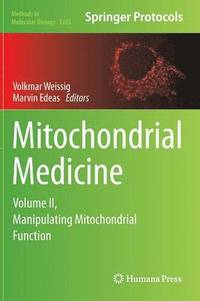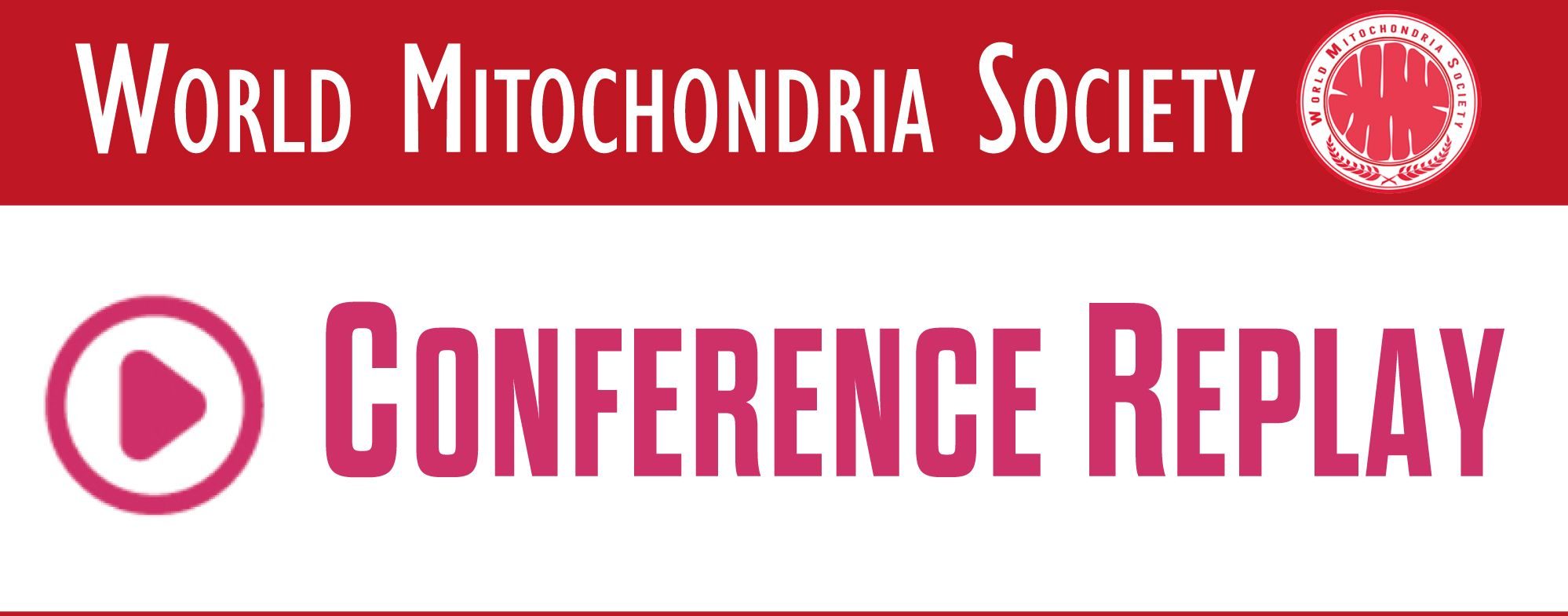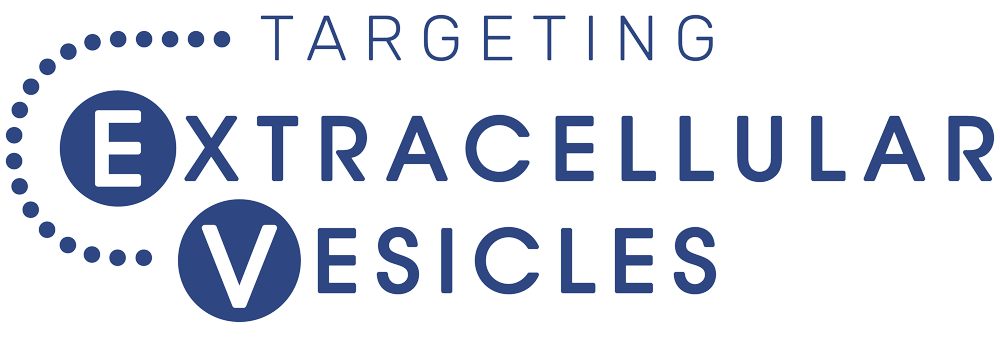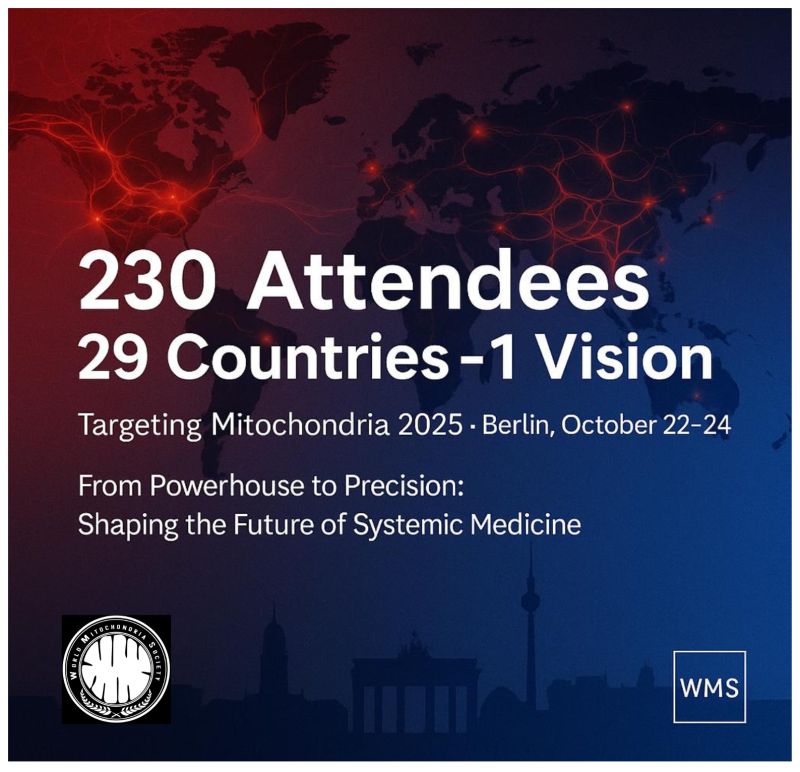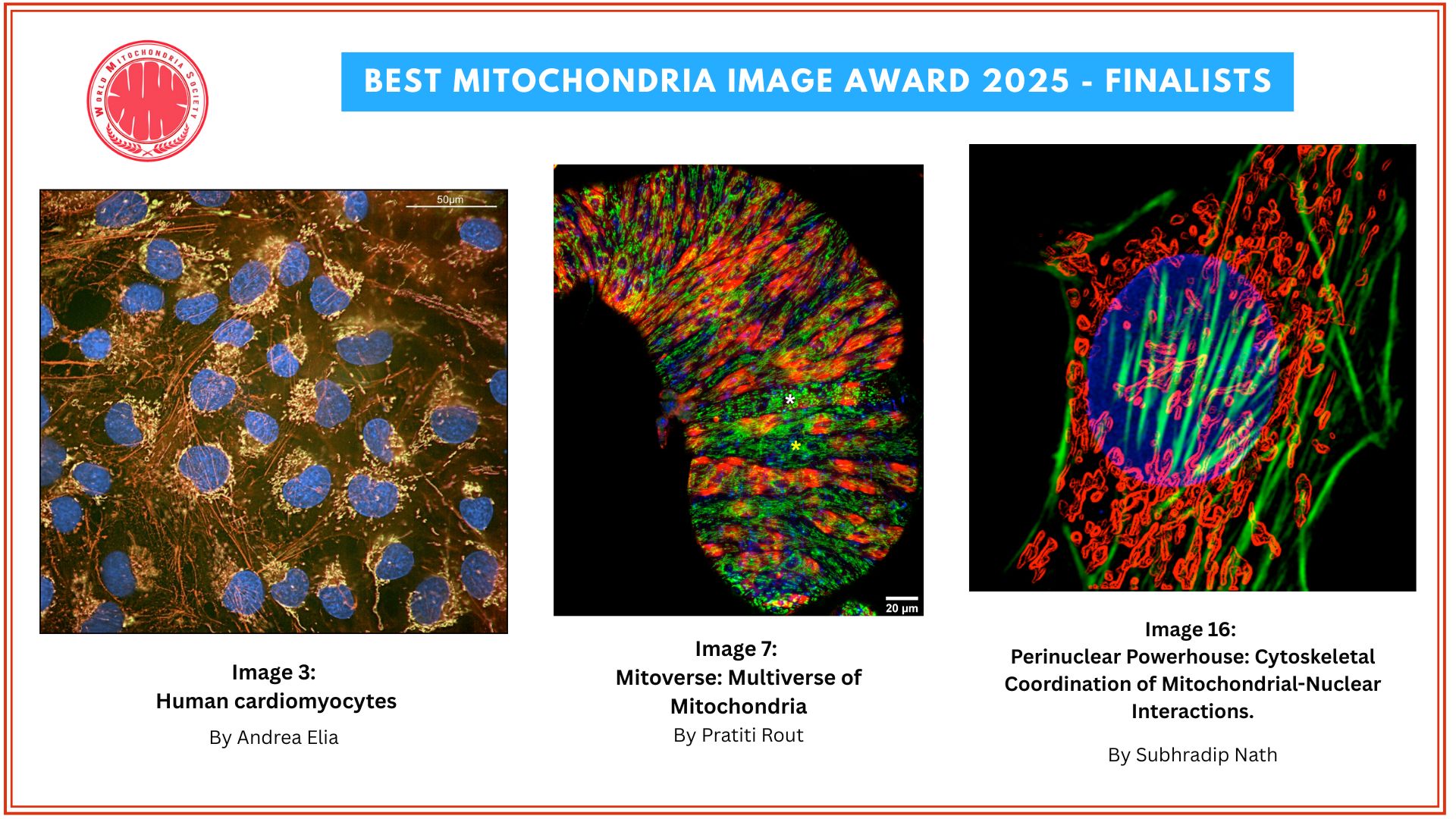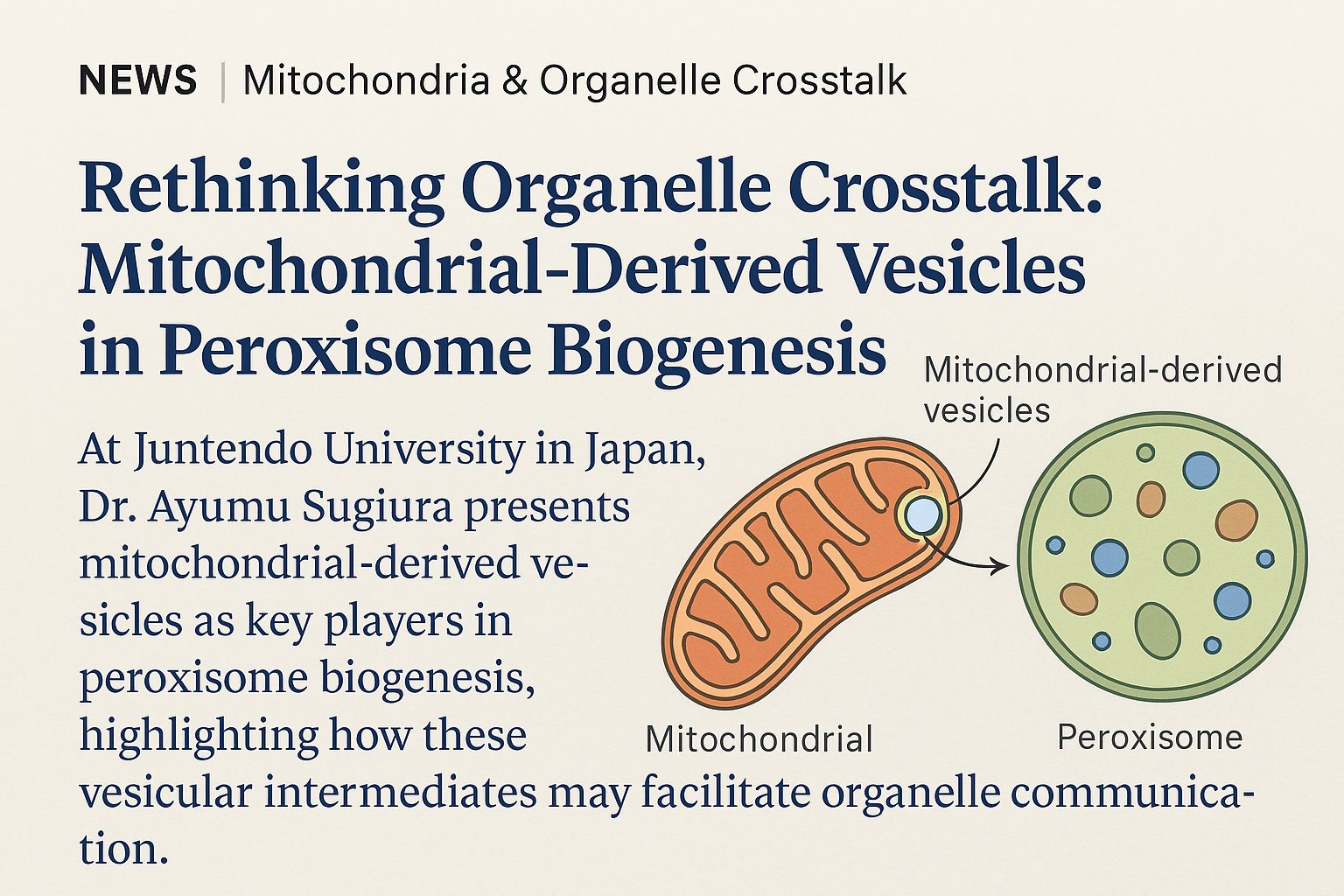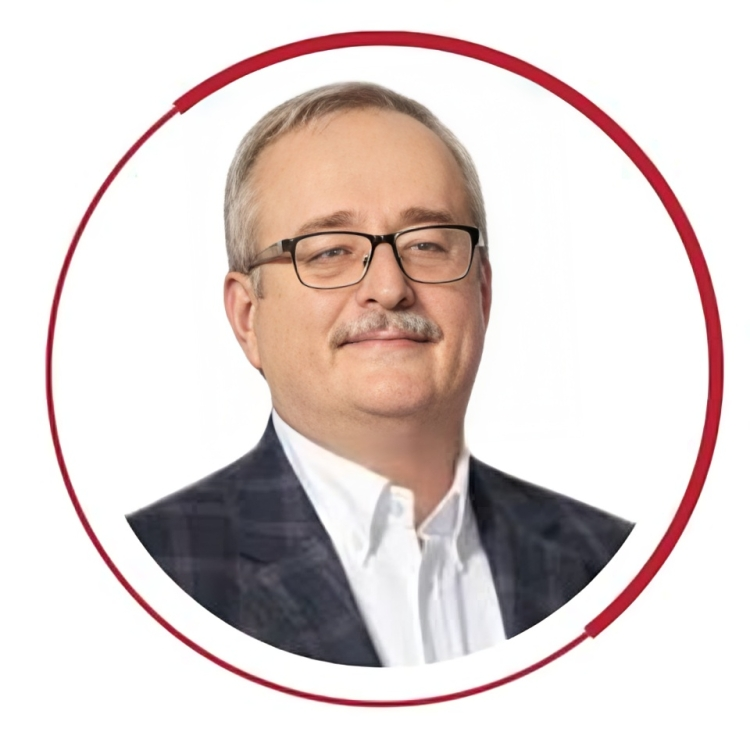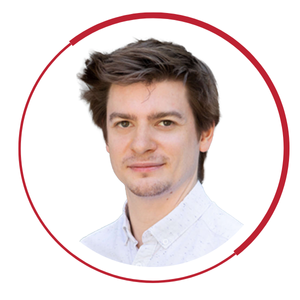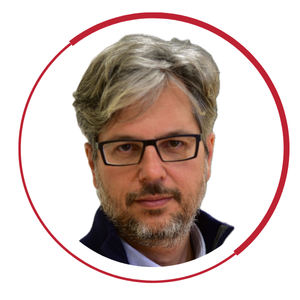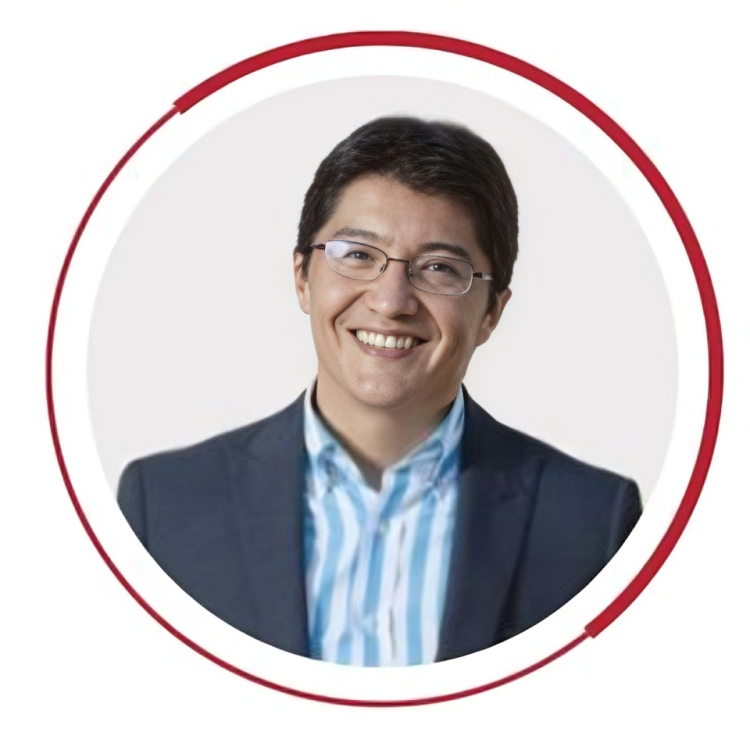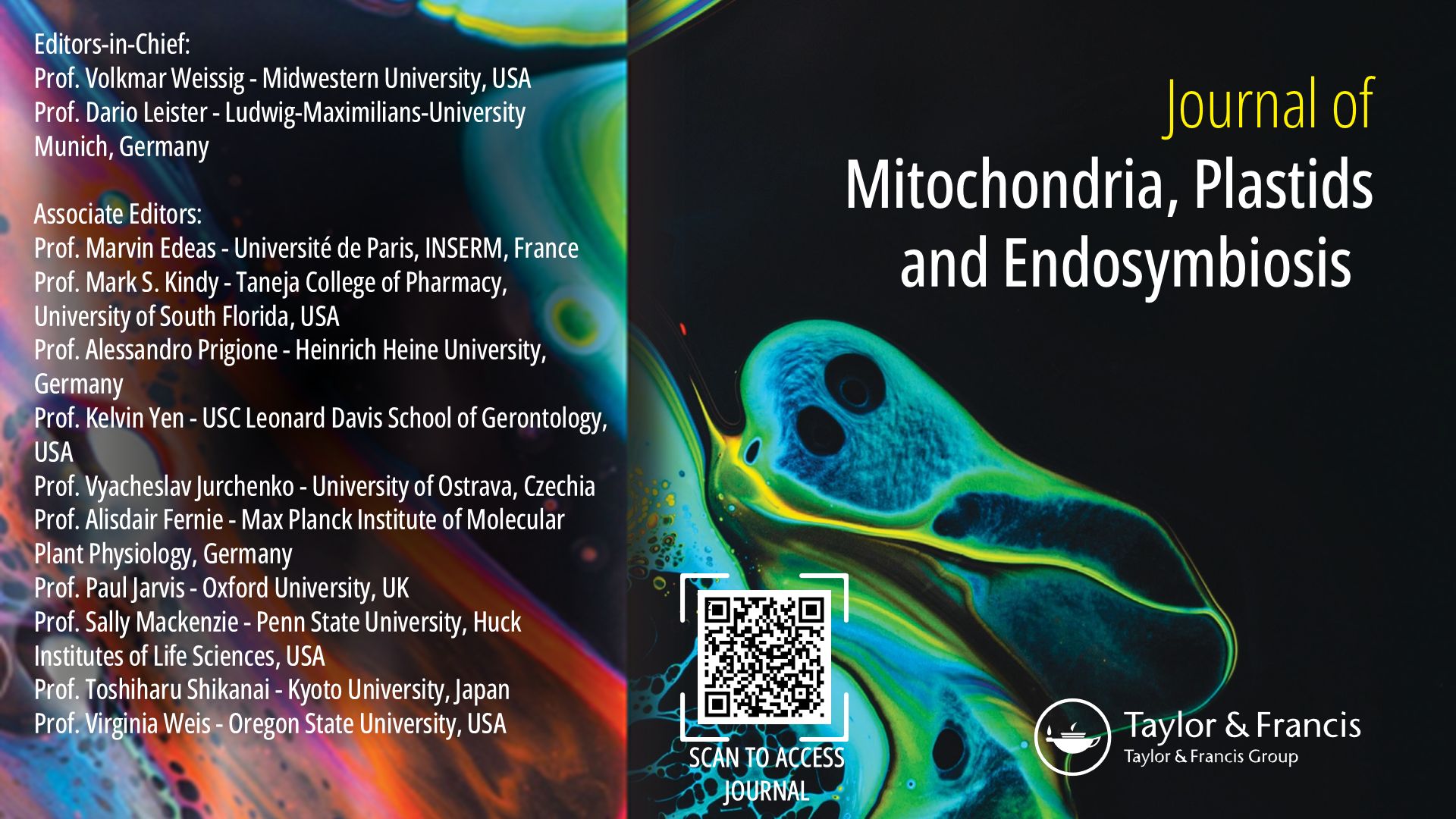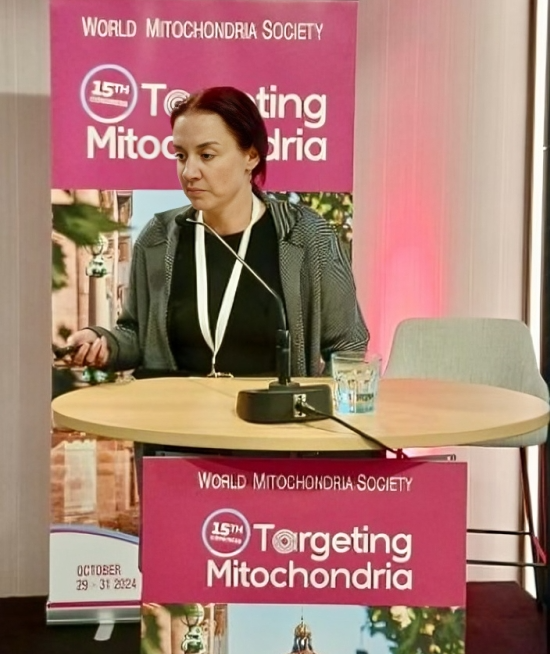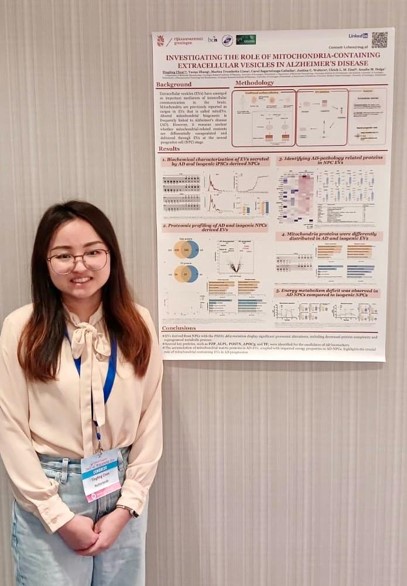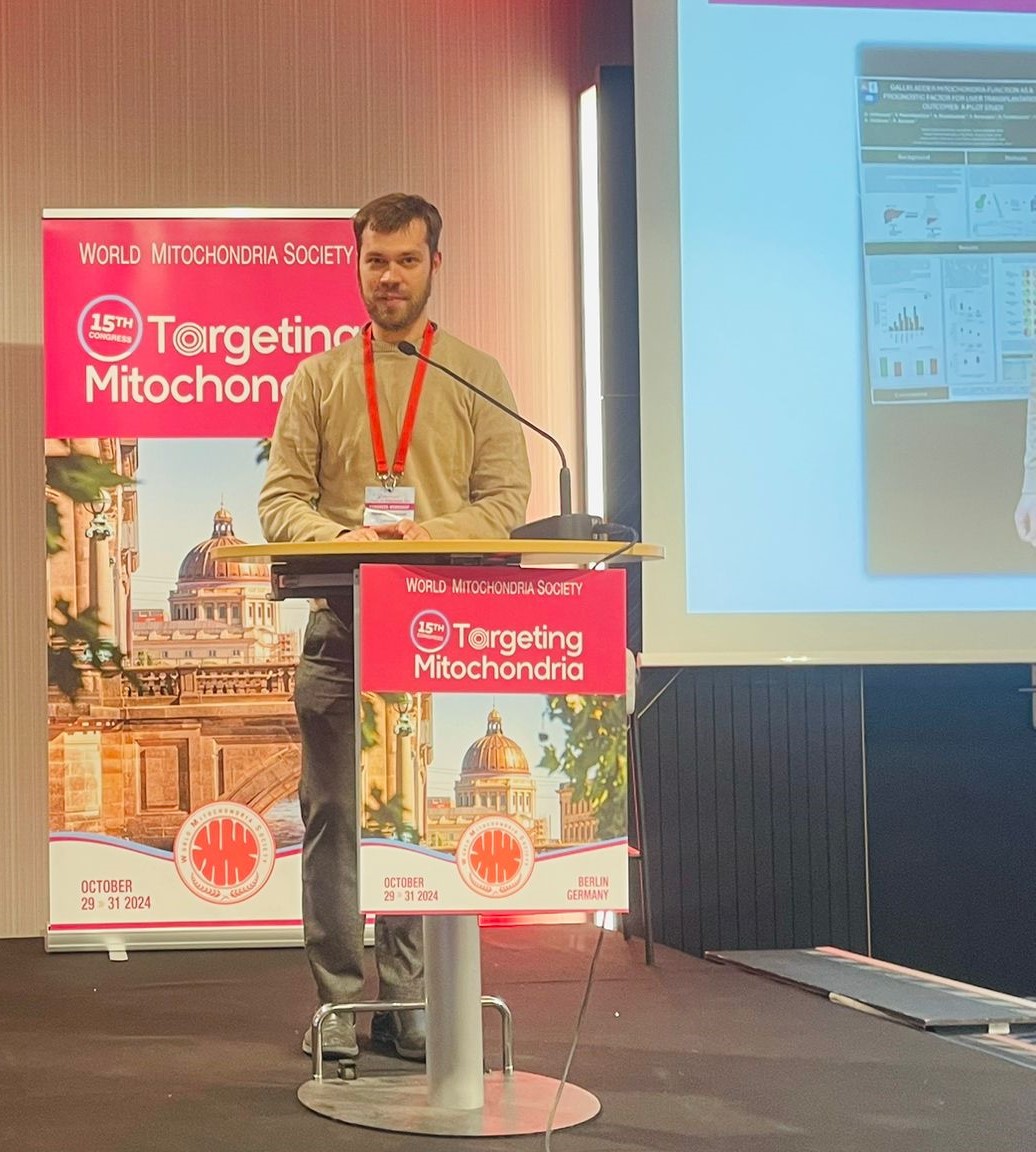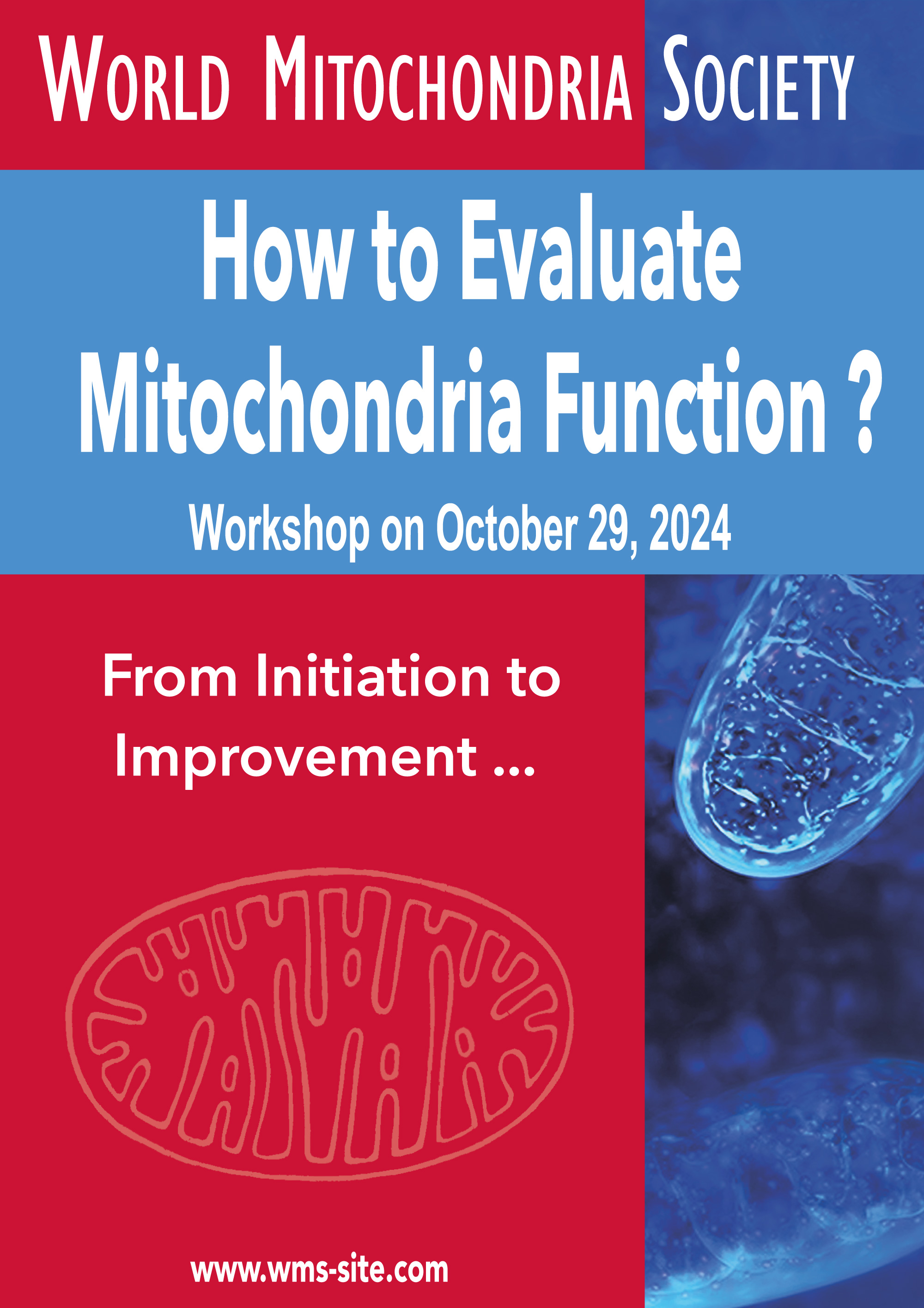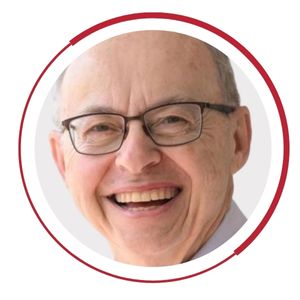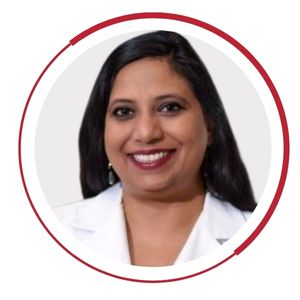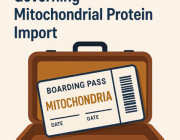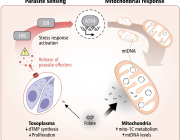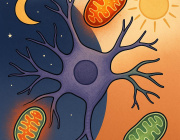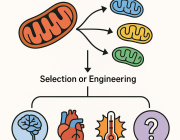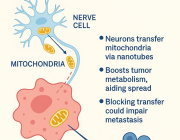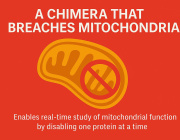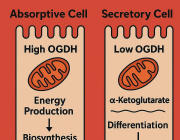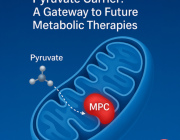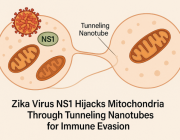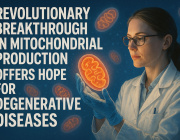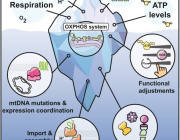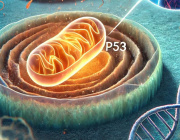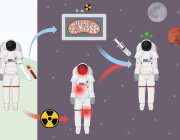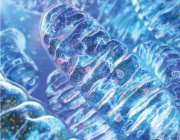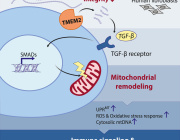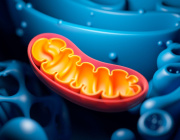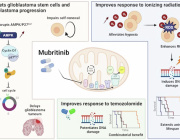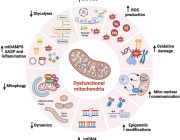WASF3 disrupts mitochondrial respiration and may mediate exercise intolerance in Myalgic Encephalomyelitis/Chronic Fatigue Syndrome (ME/CFS)
 Dr. Paul Hwang, Senior Investigator at the National Heart, Lung and Blood Institute, USA will present his latest finding targeting mitochondria in chronic fatigue symptoms during Targeting Mitochondria 2023 this October.
Dr. Paul Hwang, Senior Investigator at the National Heart, Lung and Blood Institute, USA will present his latest finding targeting mitochondria in chronic fatigue symptoms during Targeting Mitochondria 2023 this October.
Dr. Hwang's talk will be titled: "WASF3 disrupts mitochondrial respiration and may mediate exercise intolerance in ME/CFS". He will share his latest findings reported in the Proceedings of the National Academy of Sciences. Read more about this outstanding publication.
Myalgic encephalomyelitis/chronic fatigue syndrome (ME/CFS) is a disorder characterized by various disabling symptoms including exercise intolerance. Dr. Hwang and his team report that overexpression of Wiskott-Aldrich Syndrome Protein Family Member 3 (WASF3), here identified in a 38-y-old woman suffering from long-standing fatigue and exercise intolerance, can disrupt mitochondrial respiratory supercomplex formation.
Increased expression of WASF3 in transgenic mice decreased their treadmill running capacity and specific respiratory complexes. Expanding on our findings in a single patient, skeletal muscle biopsy samples obtained from a cohort of patients with ME/CFS showed increased WASF3 protein levels associated with aberrant ER stress activation. Pharmacologic inhibition of ER stress decreased WASF3 and improved mitochondrial function in the cells of the patient with chronic fatigue, suggesting a therapeutic strategy for ME/CFS treatment.
About Dr. Hwang
Dr. Paul Hwang earned B.A. degrees in biochemistry and chemistry from the University of Kansas in 1985, after which he spent a year at the Swiss Federal Institute of Technology and University of Zurich as a Fulbright Scholar. He graduated from the Johns Hopkins University School of Medicine with an M.D. and Ph.D in 1993. He did his internship and residency in internal medicine at the UCSF School of Medicine in San Francisco, followed by a clinical fellowship in cardiology and postdoctoral research in molecular oncology at the Johns Hopkins University School of Medicine. Upon completion of his training in 2001, Dr. Hwang joined the NHLBI-NIH as an investigator and was tenured in 2011. He has been elected as member of the American Society for Clinical Investigation and fellow of the American College of Cardiology.
Join Targeting Mitochondria 2023 to learn more about Dr. Hwang's research.
Targeting Mitochondria 2023 Congress
October 11-13, 2023 - Berlin, Germany
Mitochondrial Monitoring in Perioperative and Critical Care: Recent Advances & Perspectives
 Dr. Egbert Mik, Erasmus MC, The Netherlands, and ative member or WMS scientific committee, will be joining Targeting Mitochondria 2023. Dr. Mik will give an update on "Mitochondrial Monitoring in Perioperative and Critical Care"
Dr. Egbert Mik, Erasmus MC, The Netherlands, and ative member or WMS scientific committee, will be joining Targeting Mitochondria 2023. Dr. Mik will give an update on "Mitochondrial Monitoring in Perioperative and Critical Care"
In order not to miss this outstanding talk, so join Targeting Mitochondria 2023 to learn more about Dr. Mik's interesting findings.
Targeting Mitochondria 2023 Congress
October 11-13, 2023 - Berlin, Germany
Brain Organoids to Model Mitochondrial Neurological Diseases
 Prof. Alessandro Prigione, ative member or WMS scientific committee, Heinrich Heine University (HHU) Düsseldorf, Germany, will join Targeting Mitochondria 2023 to present a talk entitled: "Brain Organoids to Model Mitochondrial Neurological Diseases".
Prof. Alessandro Prigione, ative member or WMS scientific committee, Heinrich Heine University (HHU) Düsseldorf, Germany, will join Targeting Mitochondria 2023 to present a talk entitled: "Brain Organoids to Model Mitochondrial Neurological Diseases".
Join Targeting Mitochondria 2023 to learn more about Prof. Prigione's interesting findings. You can submit a related abstract here.
Targeting Mitochondria 2023 Congress
October 11-13, 2023 - Berlin, Germany
Cholesterol: Why Have Mitochondrial Biologists Ignored this Critical Mitochondrial Component for Over a Century?
 Prof. Ian Holt, active member of the scientific committee, Instituto de Investigación Sanitaria Biodonostia, Spain, will join Targeting Mitochondria 2023 to present a talk titled: "Cholesterol: Why Have Mitochondrial Biologists Ignored this Critical Mitochondrial Component for Over a Century?".
Prof. Ian Holt, active member of the scientific committee, Instituto de Investigación Sanitaria Biodonostia, Spain, will join Targeting Mitochondria 2023 to present a talk titled: "Cholesterol: Why Have Mitochondrial Biologists Ignored this Critical Mitochondrial Component for Over a Century?".
As Michael Brown noted in his 1985 Nobel Lecture: Cholesterol is the most highly decorated small molecule in biology. However, cholesterol’s contribution to mitochondrial membranes has attracted little interest, as they are ‘cholesterol-poor organelles’ with 0.5-3% of the content found in the plasma membrane. And although high cholesterol has been linked to mitochondrial dysfunction, this merely implied that mitochondria have an aversion to cholesterol.
The first forays into this field came with the unexpected discovery that pathological mutant forms of the trans-mitochondrial membrane protein, ATAD3, completely reconfigure cellular cholesterol metabolism.
During Targeting Mitochondria 2023, Prof. Holt will report the central role of cholesterol in the ATAD3 disease cascade, and crucially show that the molecular phenotypes stem from the mitochondrion’s absolute requirement for cholesterol.
Join Targeting Mitochondria 2023 to learn more about Prof. Holt's interesting findings.
Targeting Mitochondria 2023 Congress
October 11-13, 2023 - Berlin, Germany
Mitochondrial Presequence Protein Translocation
 Prof. Nils Wiedemann, Universität Freiburg, Germany, will join Targeting Mitochondria 2023 to present a talk entitled: "Mitochondrial Presequence Protein Translocation".
Prof. Nils Wiedemann, Universität Freiburg, Germany, will join Targeting Mitochondria 2023 to present a talk entitled: "Mitochondrial Presequence Protein Translocation".
Virtually all of the ~1,000 different mitochondrial proteins are synthesised in the cytosol and must be imported into the organelle. Most of these mitochondrial precursor proteins contain an amino-terminal presequence, which forms a positively charged amphiphilic alpha-helix. The TIM23 translocase sorts these presequence proteins into the inner membrane or matrix. Prof. Wiedemann and colleagues mapped the interaction of the essential subunit Tim17 with presequence containing precursor proteins.Tim17 contains conserved negative charged residues close to the intermembrane space side of the inner membrane, which are essential for presequence protein translocation along a distinct transmembrane cavity of the Tim17-bilayer interface.
About Prof. Wiedemann,
Professor (apl.) of Biochemistry and Molecular Biology, University of Freiburg, Germany
Prof. Wiedmann won the Young Investigator Award, German Society for Biochemistry and Molecular Biology (GBM) Frankfurt in the year 2007.
Join Targeting Mitochondria 2023 to learn more about Prof. Wiedemann's interesting findings. Read more about Prof. Wiedmann's latest research.
Targeting Mitochondria 2023 Congress
October 11-13, 2023 - Berlin, Germany
Dr. Naig Gueguen announces the Agenda of the Upcoming Workshop on Mitochondrial Function and Dysfunction Evaluation
In association with the World Mitochondria Society (WMS), we are thrilled to announce the hosting of a specialized workshop focused on the Evaluation of Mitochondria Function, Dysfunction, and Activities. The workshop will take place on October 11, 2023, one day prior to the start of the Targeting Mitochondria 2023 Congress.
Purpose of the Workshop
This workshop will delve into the significant role mitochondria play in various medical fields, including cardiology, neurology, nephrology, and infectious diseases, among others. Given the centrality of mitochondria to human metabolism, their assessment is vital for the discovery of treatments for diseases associated with mitochondrial dysfunction.
Workshop Key Objectives
- To introduce and review technological tools used for mitochondrial study and analysis.
- To provide an understanding of mitochondrial markers evaluated in the context of medical research.
- To present various methodologies for analyzing mitochondria and their functions, including bioenergetics, biogenesis, dynamics, and mitophagy.
- To discuss biochemical diagnostic strategies for mitochondrial diseases.
- To discuss practical cases to solidify understanding.
Who Can Attend?
The workshop welcomes everyone looking to enhance their understanding and proficiency in the field of mitochondria, metabolism, and bioenergetics, their vital roles within the human body, as well as the latest innovations in therapeutic tools and analyses.
About Dr. Naig Gueguen:
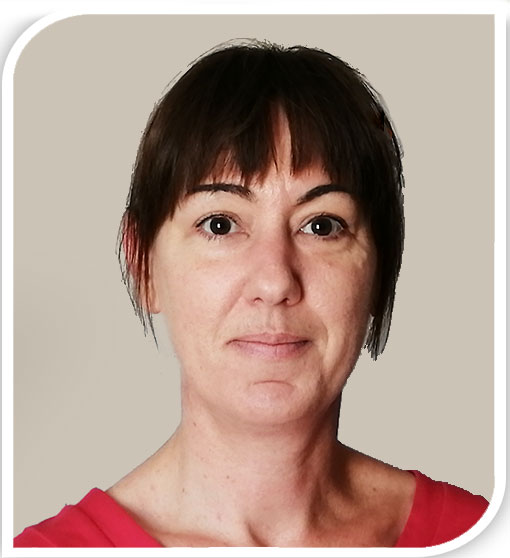 Dr. Gueguen is an expert from the Mitovasc Institute, Mitolab team, and member of INSERM 1083, CNRS 6215, Centre Hospitalier Universitaire d’Angers. She will eagerly anticipate this enriching workshop. The Mitovasc Institute's Mitolab Team is renowned worldwide for its work in mitochondrial research. The team focuses on studying mitochondrial function and dysfunction, with the aim of developing effective treatments for various diseases.
Dr. Gueguen is an expert from the Mitovasc Institute, Mitolab team, and member of INSERM 1083, CNRS 6215, Centre Hospitalier Universitaire d’Angers. She will eagerly anticipate this enriching workshop. The Mitovasc Institute's Mitolab Team is renowned worldwide for its work in mitochondrial research. The team focuses on studying mitochondrial function and dysfunction, with the aim of developing effective treatments for various diseases.
Contact WMS: This email address is being protected from spambots. You need JavaScript enabled to view it.
Targeting Mitochondrial Activity in Liver in Disease: Barriers and Perspectives
 Prof. María Luz Martínez-Chantar, CIC bioGUNE, Spain, will join Targeting Mitochondria 2023 to present a talk entitled: "Targeting Mitochondrial Activity in Liver in Disease: Barriers and Perspectives".
Prof. María Luz Martínez-Chantar, CIC bioGUNE, Spain, will join Targeting Mitochondria 2023 to present a talk entitled: "Targeting Mitochondrial Activity in Liver in Disease: Barriers and Perspectives".
Mitochondrial dysfunction is a critical factor contributing to the pathogenesis and progression of chronic liver diseases. This study conducted by Prof. Martínez-Chantar aims to elucidate key players, causative factors, and consequences of mitochondrial dysfunction in the context of liver health.
Specifically, she and her team explore the potential therapeutic benefits of enhancing mitochondrial activity by modulating genes related to the electron transport chain, mitochondrial metabolism and cation modulators in the liver.
The findings provide compelling evidence supporting different genes as a promising therapeutic approach that not only ameliorates liver injury but also fosters liver regeneration.
Join Targeting Mitochondria 2023 to learn more about Prof. Martínez-Chantar's interesting findings.
About Prof. Martinez-Chantar
Professor Martinez-Chantar has an extensive experience in the study of liver biology and disease with a high-level track of productivity in the 1st decile journals like Nature Communications, Cell Metabolism, Hepatology, Journal of Hepatology and Gastroenterology. She has been continuously supported by competitive public and private funding, both national and international, including NIH. She coordinates the Translational Area of the National Institute for the study of Liver & Gastrointestinal Diseases and is in the SAB of the Molecular Medicine Center Nice, IDIVAL and IDIBAPS. She shows extensive participation in different networks (CibereHD, Women in Hepatology: International Consortium, Hepamet Registry, MetaboCancer Excellence Network and diverse EU COST actions). Her contracts with pharmas, as AGIOS, Mitotherapeutix, Takeda or Silence Therapeutics, led to 5 patent applications and 4 licensed products. Her collaboration with OWL Metabolomics led to the development of OWLiver® Care and OWLiver®, non-invasive assays for NASH diagnosis.
Targeting Mitochondria 2023 Congress
October 11-13, 2023 - Berlin, Germany
Targeting Mitochondria Based on Mitochondrial Drug Delivery Systems (DDS)

Under its guiding slogan “The future of medicine will come through mitochondria”, the World Mitochondria Society proudly presents Targeting Mitochondria 2023 speakers. This conference gathers the brightest minds, leaders and actors in mitochondrial research.
At the forefront of this gathering is Prof. Yuma Yamada of the Faculty of Pharmaceutical Sciences, Hokkaido University, who will give a standout presentation on “Targeting Mitochondria Based on Mitochondrial Drug Delivery Systems (DDS).” Prof. Yamada’s recent recognition as the recipient of the American Pharmacists Association’s 2022 Ebert Prize—the oldest and one of the most prestigious pharmacy awards in the US—further cements his standing in the field.
A Significant Advancement in Mitochondrial Research: The MITO-Porter
Addressing challenges that have spanned a decade in mitochondrial drug delivery, Prof. Yamada’s development of the MITO-Porter is especially noteworthy. This cutting-edge nano DDS is meticulously engineered to transport macromolecular cargos directly into mitochondria via membrane fusion. The MITO-Porter represents not just a technological marvel but a beacon for the future of mitochondrial medicine.
Although various mitochondrial drug delivery systems have emerged over the years, many have encountered hurdles. The MITO-Porter, with its groundbreaking approach, navigates these challenges, heralding a new era of therapeutic potential.
In his presentation, Prof. Yamada will provide an in-depth overview of the MITO-Porter, elucidating its design, capabilities, and forward-looking applications. Attendees will be enriched with insights into the contemporary landscape of mitochondrial DDS and will experience the profound impact of the MITO-Porter in the domain of mitochondrial therapy.
Join Targeting Mitochondria 2023 to learn more about Prof. Yamada's interesting talk.
Targeting Mitochondria 2023 Congress
October 11-13, 2023 - Berlin, Germany
Mitochondrial Transplantation: What's Next?
 Dr. James D. McCully, from The Harvard Medical School Department of Cardiac Surgery Boston Children’s Hospital, USA, will join us this year to present his most recent findings: "Mitochondrial Transplantation What's Next?".
Dr. James D. McCully, from The Harvard Medical School Department of Cardiac Surgery Boston Children’s Hospital, USA, will join us this year to present his most recent findings: "Mitochondrial Transplantation What's Next?".
Join Targeting Mitochondria 2023 to learn more about Dr. McCully's interesting talk.
Targeting Mitochondria 2023 Congress
October 11-13, 2023 - Berlin, Germany
Why a WMS Task Force?
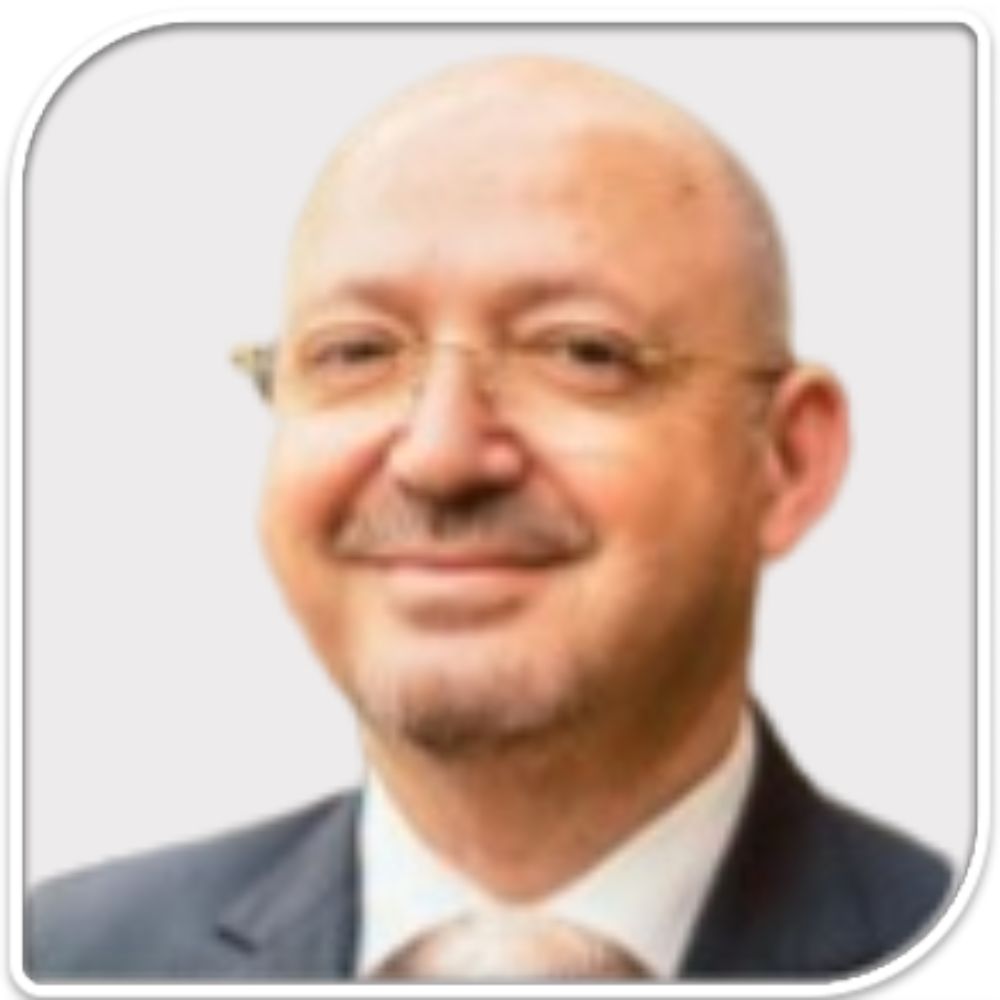 Prof. Marvin Edeas, Institut Cochin, Université de Paris, France, will join Targeting Mitochondria 2023 to explain further on : "Why a WMS Task Force?".
Prof. Marvin Edeas, Institut Cochin, Université de Paris, France, will join Targeting Mitochondria 2023 to explain further on : "Why a WMS Task Force?".
Join Targeting Mitochondria 2023 to learn more about Prof. Edeas's interesting talk.
Targeting Mitochondria 2023 Congress
October 11-13, 2023 - Berlin, Germany
MNRR1/CHCHD2 and Mitochondrial Dysfunction in Disease
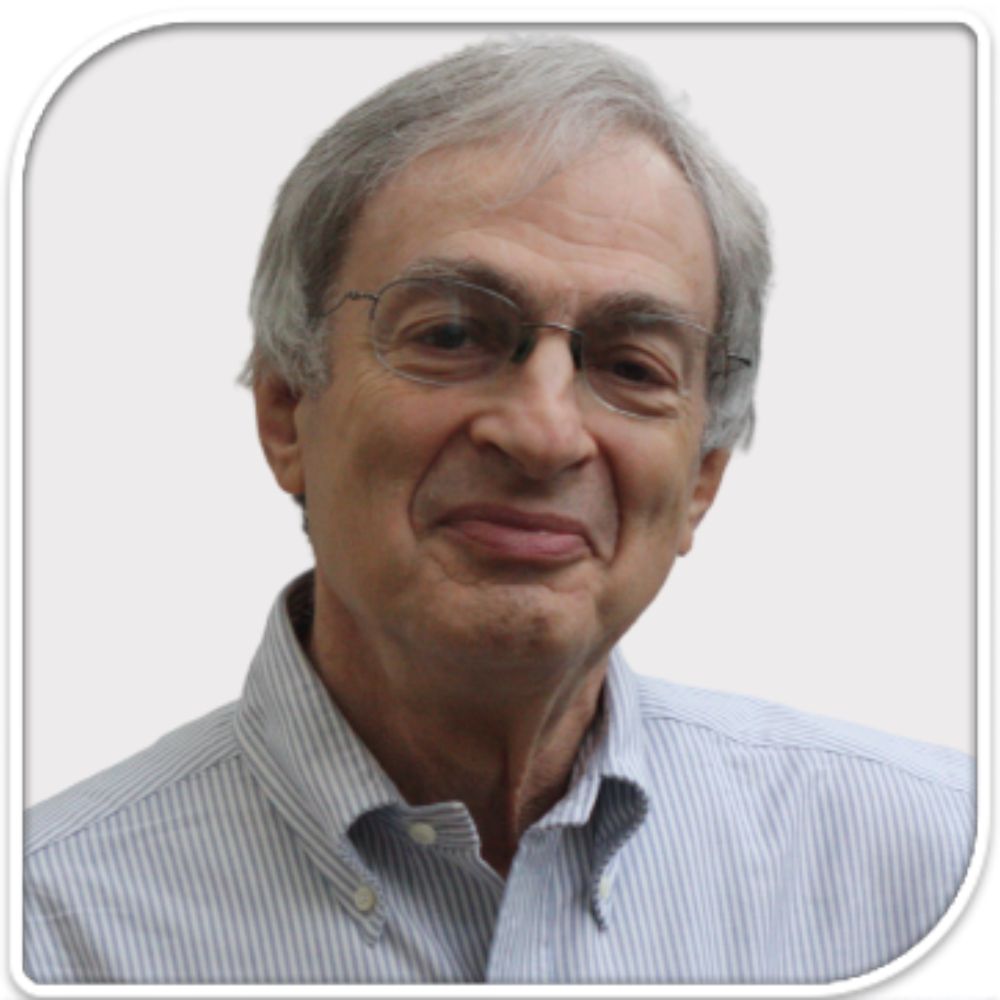 Dr. Lawrence Grossman, Wayne State University, USA will join the Targeting Mitochondria 2023 Congress and give a presentation entitled "MNRR1/CHCHD2 and Mitochondrial Dysfunction in Disease".
Dr. Lawrence Grossman, Wayne State University, USA will join the Targeting Mitochondria 2023 Congress and give a presentation entitled "MNRR1/CHCHD2 and Mitochondrial Dysfunction in Disease".
MNRR1 levels are reduced in several diseases that contain mitochondrial dysfunction. Either genetic or pharmacological restoration of MNRR1 levels also restores function, both in a cell and an animal model. The disease induced reduction of MNRR1 takes place by both transcriptional and post transcriptional mechanisms in different disease models.
Join Targeting Mitochondria 2023 to learn more about Dr. Grossman's exciting talk. You can submit a related abstract here.
Targeting Mitochondria 2023 Congress
October 11-13, 2023 - Berlin, Germany
Stealth Therapeutics Will Exhibit during Targeting Mitochondria 2023
 Stealth Therapeutics will showcase their latest innovations in mitochondrial medicine during Targeting Mitochondria 2023 in Berlin the October.
Stealth Therapeutics will showcase their latest innovations in mitochondrial medicine during Targeting Mitochondria 2023 in Berlin the October.
Dr. David A. Brown is Vice President of Mitochondrial Research at Stealth BioTherapeutics, and will give a short oral talk on “Translational insights from targeting mitochondria in rare diseases”.
Dr. Brown's talk will include an overview of Stealth’s clinical programs to date, including updates on targeting rare mitochondrial diseases in several Phase 2/3 clinical trials, as well as emerging approaches to mitigate mitochondrial dysfunction in pathologies.
About Stealth BioTherapeutics
Stealth BioTherapeutics is a clinical-stage biotechnology company focused on the discovery, development, and commercialization of novel therapies for diseases involving mitochondrial dysfunction. Dysfunctional mitochondria are centrally involved in a number of rare genetic diseases and many common age-related diseases, typically involving organ systems with high energy demands such as the eye, the neuromuscular system, the heart and the brain.

World Mitochondria Society
14th Targeting Mitochondria 2023 Congress
October 11-13, 2023 - Berlin, Germany
LinkedIn | Facebook
Internalization of Exogenous Mitochondria for Endothelial Corneal Dystrophy Treatment
 Dr. Patrick J. Rochette from Université Laval, Canada will join the Targeting Mitochondria 2023 Congress and give a presentation entitled "Internalization of Exogenous Mitochondria for Endothelial Corneal Dystrophy Treatment".
Dr. Patrick J. Rochette from Université Laval, Canada will join the Targeting Mitochondria 2023 Congress and give a presentation entitled "Internalization of Exogenous Mitochondria for Endothelial Corneal Dystrophy Treatment".
Fuchs' endothelial corneal dystrophy (FECD), a degenerative ocular disease, causes progressive vision loss that can lead to blindness. It is the leading cause of corneal transplantation, but the scarcity of grafts hinders its treatment. Dr. Rochette and his team have previously demonstrated a vicious cycle leading to FECD progression in which the mitochondria is central.
They have tested whether transplanting healthy mitochondria into FECD cells would improve pathological molecular markers of the disease. Using corneal endothelium explants from FECD patients, they demonstrated that incorporation of exogenous mitochondria into FECD cells by co-incubation reduces oxidative stress, increases mitochondrial membrane potential, and reduces mitophagy. In addition, internalization of exogenous mitochondria significantly reduces apoptosis.
Taken together, these results suggest that the internalization of exogenous mitochondria reverses the vicious circle involved in FECD, thus revealing a much-needed novel treatment alternative for FECD.
Join Targeting Mitochondria 2023 to learn more about Dr. Rochette's exciting talk. Read more about Dr. Rochette's research.
Targeting Mitochondria 2023 Congress
October 11-13, 2023 - Berlin, Germany
Cardiac MitoMed: From Bench to Bedside
 Dr. Sang-Bing Ong from The Chinese University of Hong Kong, China, will join the Targeting Mitochondria 2023 Congress and give a presentation entitled "Cardiac MitoMed: From Bench to Bedside".
Dr. Sang-Bing Ong from The Chinese University of Hong Kong, China, will join the Targeting Mitochondria 2023 Congress and give a presentation entitled "Cardiac MitoMed: From Bench to Bedside".
Cardiovascular disorders remain the leading cause of death and disability worldwide. The extent of cardiac cell death and left ventricular systolic function are the strongest predictors of morbidity and mortality following cardiac disorders. Despite optimal therapy, the morbidity and mortality of cardiovascular patients remain significantly high. On this background, there remains an urgent clinical need to discover novel therapies for reducing cardiac injury/death and preserving cardiac function so as to improve health outcomes for cardiovascular patients.
In this regard, the viability of the heart and cardiac function is critically dependent on the ability of cardiac mitochondria to generate the energy required for optimal contractile function. Therefore, preventing mitochondrial dysfunction induced by cardiac disorders constitutes an important therapeutic strategy for preserving cardiac viability and function. As opposed to the conventional belief that the mitochondria are static organelles, mitochondria are actually dynamic whereby they change shapes (morphology) and shift locations in the cell. Studies from the last decade have focused on targeting the mitochondria so as to protect the heart. Nevertheless, results so far have been inconclusive.
Dr. Ong will present data from his team describing our efforts in modulating cardiac mitochondrial morphology to protect the heart against ischemia-reperfusion injury
Join Targeting Mitochondria 2023 to learn more about Dr. Ong's exciting talk.
Targeting Mitochondria 2023 Congress
October 11-13, 2023 - Berlin, Germany
Defining the Molecular Nature of the Mitochondrial permeability transition pore(s)
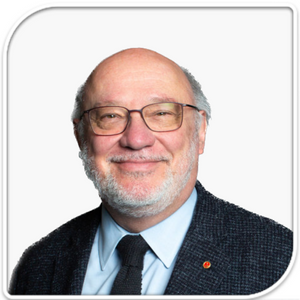 Prof. Paolo Bernardi from the University of Padova, Italy, will join the 14th edition of the World Conference on Targeting Mitochondria 2023 which will be held from October 11th to 13th in Berlin, Germany, and give a talk entitled "Defining the Molecular Nature of the Mitochondrial permeability transition pore(s)".
Prof. Paolo Bernardi from the University of Padova, Italy, will join the 14th edition of the World Conference on Targeting Mitochondria 2023 which will be held from October 11th to 13th in Berlin, Germany, and give a talk entitled "Defining the Molecular Nature of the Mitochondrial permeability transition pore(s)".
Major progress has been made in defining the basis of the mitochondrial permeability transition, a Ca2+-dependent permeability increase of the inner membrane that has puzzled mitochondrial research for almost 70 years. Initially considered an artifact of limited biological interest by most, over the years the permeability transition has raised to the status of regulator of mitochondrial ion homeostasis and of druggable effector mechanism of cell death. The permeability transition is mediated by the opening of channel(s) modulated by matrix cyclophilin D, the permeability transition pore(s) (PTP). The field has received a new impulse from the hypothesis that the PTP may originate from a Ca2+-dependent conformational change of F-ATP synthase and from the reevaluation of the long-standing hypothesis that it originates from the adenine nucleotide translocator. Prof. Bernardi will discuss potential mechanisms for PTP formation and the role of the permeability transition in pathophysiology.
Join Targeting Mitochondria 2023 to learn more about Prof. Bernardi's interesting talk.
Targeting Mitochondria 2023 Congress
October 11-13, 2023 - Berlin, Germany






